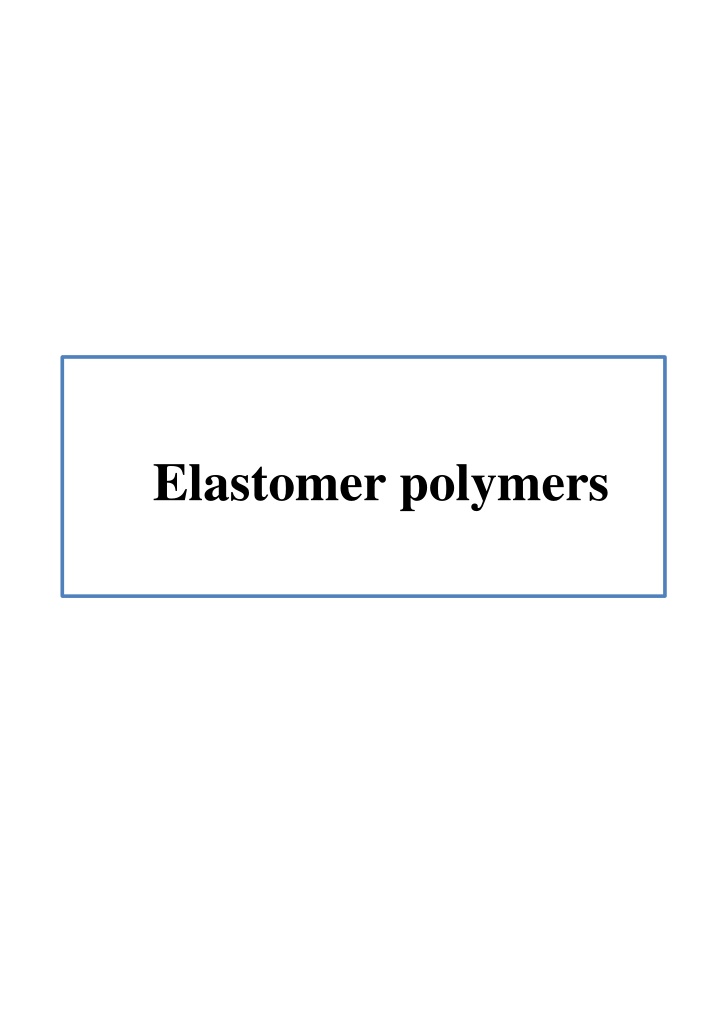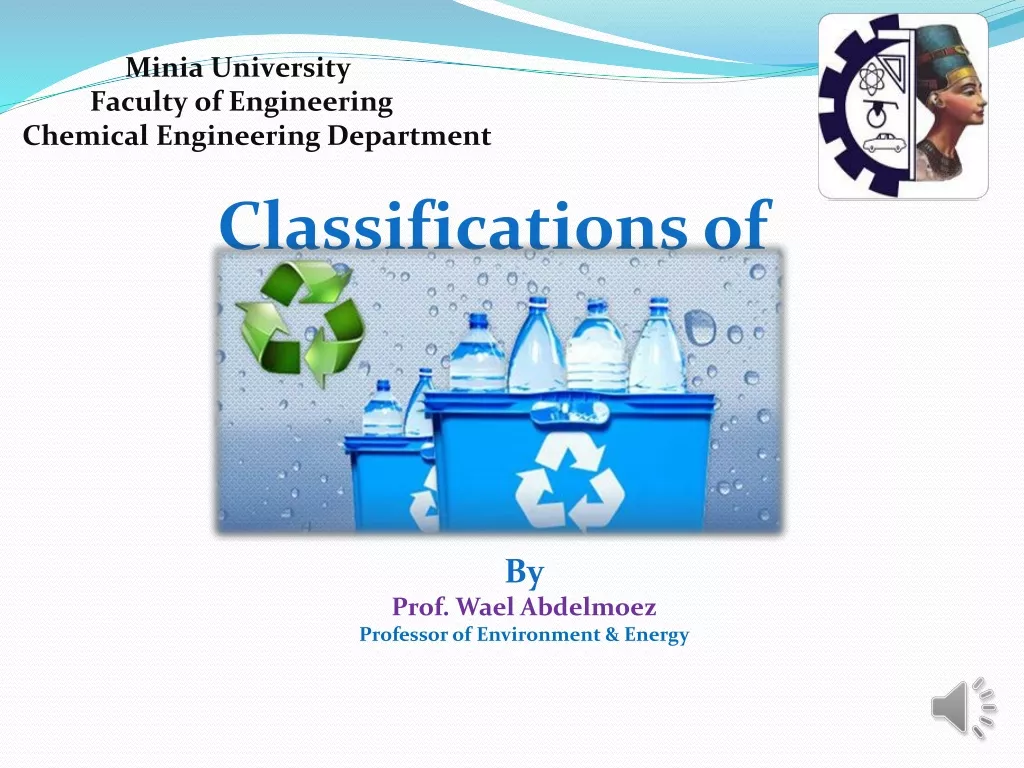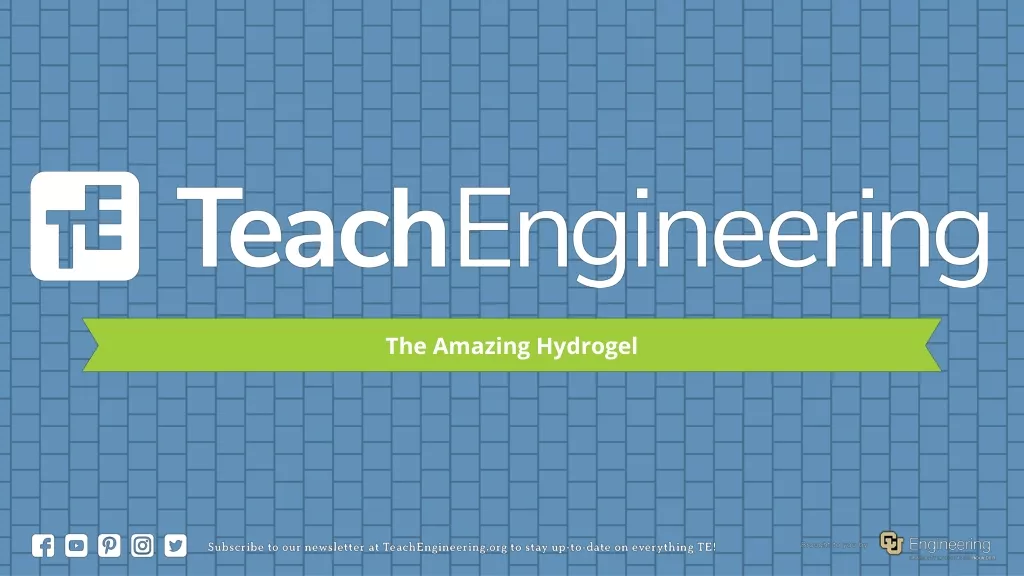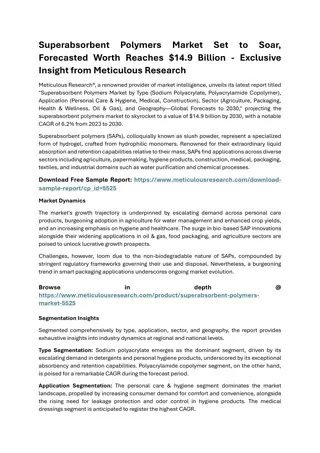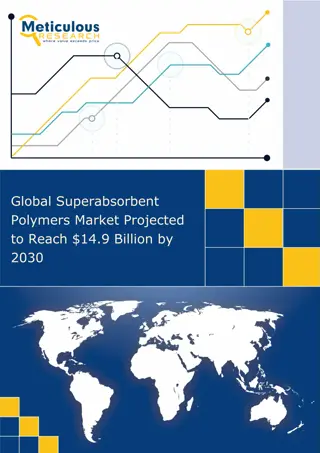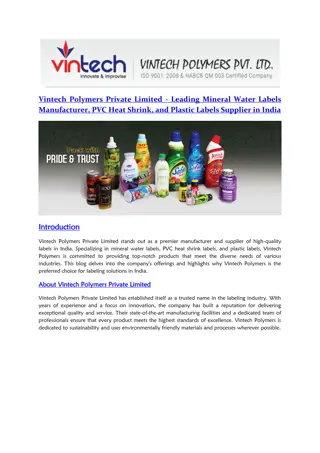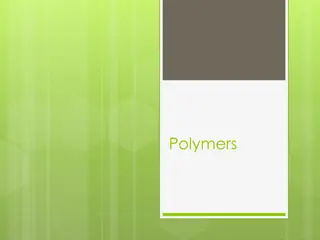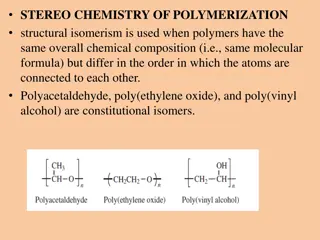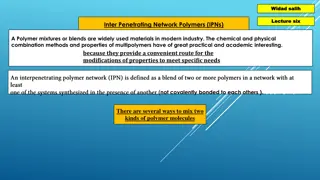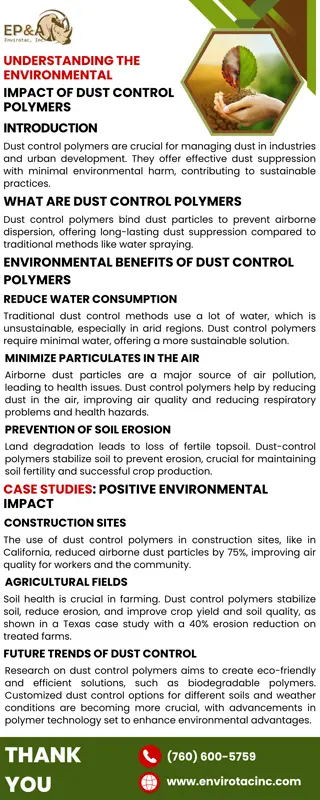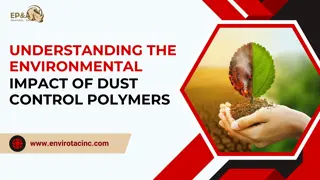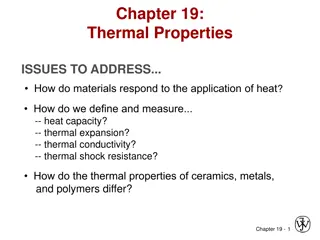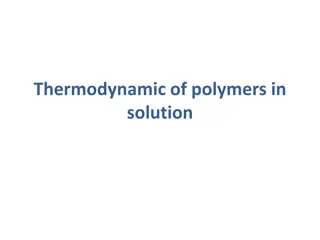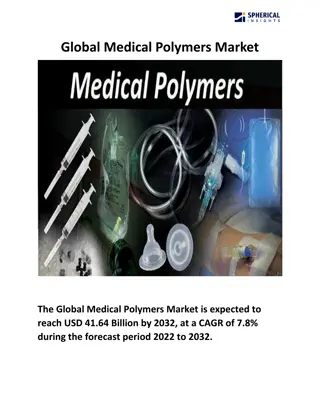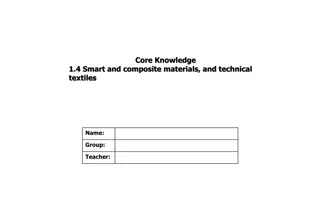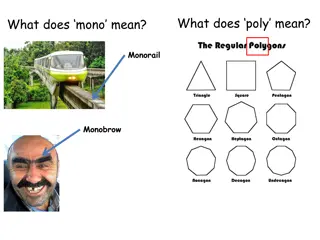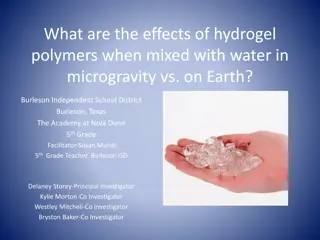Elastomer polymers
This informative material presented by Dr. Mohammad AlShehri delves into various common neck swellings, focusing on thyroid-related conditions such as thyroid cysts, multinodular goiter, and malignant tumors. The content includes detailed case studies, images, and characteristics of thyroid malignancy subtypes like papillary carcinoma and follicular carcinoma. Patients with complaints such as painless enlarging nodules, hoarseness of voice, and dysphagia are discussed, along with differential diagnoses and potential causes of thyroid swellings.
Uploaded on Feb 20, 2025 | 0 Views
Download Presentation

Please find below an Image/Link to download the presentation.
The content on the website is provided AS IS for your information and personal use only. It may not be sold, licensed, or shared on other websites without obtaining consent from the author.If you encounter any issues during the download, it is possible that the publisher has removed the file from their server.
You are allowed to download the files provided on this website for personal or commercial use, subject to the condition that they are used lawfully. All files are the property of their respective owners.
The content on the website is provided AS IS for your information and personal use only. It may not be sold, licensed, or shared on other websites without obtaining consent from the author.
E N D
Presentation Transcript
ElastomerMaterials An elastomer materials is represented one type of polymer materials which has amorphous structure and weak intermolecular forces between long molecules chains that are stable in three dimensional network structures after curing process, this materials have high elasticity therefore can be stretched to several times up to (5-10) times of original length depending on the specific material and producing large deformations (strains) of its, when subjected to external load and complete returning to their original dimensions rapidly and forcibly when this load is removed. Generally, in elastomer (rubber) material the molecules chains motion depends on the material's glass transition temperature (Tg). All polymers above glass transition temperature (Tg), act as rubber materials due to entanglements, however, when the entanglements break, the polymer will begin to flow. The glass transition temperatures of all rubber are quite low, usually below room temperature, therefore many polymers at room temperatures act as rubbers and being have many useful properties and use in many applications because of their unusual properties, which are unmatched by other types of materials. These materials can be modified after curing process by heat, irradiation or chemical reaction. Also it has viscoelasticity (viscosity and elasticity) property, and dissipates energy because of its viscoelastic nature. However, the vulcanization process lead to reduce the viscosity, increase the elasticity, also elastomer will be insoluble in boiling solvent and becomes more resilience. The elastomer term is often used interchangeably with the rubber term, the difference between an elastomer and rubber is the rubber term that is previous using to refer the originally of natural rubber (NR), which naturally derived from organic materials that occurred naturally in nature, this term was first used by English. While, the elastomer term is recently using to refer the materials which is derived from by-products of petroleum or natural gas, and produced synthetically by human to produce the synthetic rubber. 1
Mechanical Behaviors of Elastomer Materials Under normal conditions the long molecules chains making up an elastomeric material as randomly distribution and irregularly arrangement. But when force applied on it, the molecules chains stretching in the direction of force applied. When removal of this external forces the molecules chains spontaneously return to their normal configuration and original shape, as random distribution and irregularlyarrangement. Therefore the elastomers (rubber) materials are differentiated from other polymers materials by the mechanical property, because any rubber material consist of relatively large and long molecules chains having a high degree of flexibility (elasticity) and mobility (resilience), which allow it to appear high deformability (strain), after extension when subjected to external loads because of high degree of flexibility this process as shown in Figure (1). In additional these molecules chains are usually joined by chemical bonds into a network structure, also at some time a slightly cross linked structure, that are capable of recovering to their original shape rapidly, without any residual or non- recoverable strain, because of high chain mobility. Figure (1): (A) unstressed polymer, (B) same polymer under stress, when the stress is removed, it will return to their original configuration. 2
Hence, elastomers derived from two words (elastic polymer), elastic is describing the ability of a material to extension when subjected to external loads and return to its original shape when a load is removed. While, the mers that drive from polymer which is means the parts. Classification of Elastomer Materials Depending on the polymer structure and degree of the chemical bonds in the polymers, elastomeric materials can have properties similar to thermosetting or thermoplastics, so elastomeric materials can be divided broadly into two types: 1- ThermosettingElastomers Most elastomers materials are thermosets, these materials having a three dimensional network (cross link) structure, can be swelling but do not dissolve in solvents, which do not melt when heated, these materials usually require curing (vulcanization) process. In this process the long molecules chains held together by chemical bonds (covalent bonds), then material becomes stronger, and it cannot be remelted, remolded, recycled, and reprocessed, such as styrene butadiene rubber and butadiene rubber. Thermosetting elastomers are classified as general purpose elastomers and specialty purpose elastomers. General purpose elastomers are used in many applications, such as styrene butadiene rubber (SBR), butadiene rubber (BR), and natural rubber (NR). Whereas general elastomer are unsuitable in some applications and required higher performance materials the specialty purpose elastomers are used, these materials are more costly, hence are produced in smaller volumes, such as silicon rubber (MQ), polyacrylic rubber (PAR). The thermosetting elastomers types are shown in Figure (2). 3
Figure (2): Flow Chart of Thermosetting Elastomers Classification. 2- ThermoplasticsElastomers Some elastomers materials are thermoplastic, these materials having a liner structure, and can be dissolves in suitable solvents but do not swelling, these materials not require curing (vulcanization) process and the molecules chains are joined by the weaker physical bonds, such as (hydrogen bonds, vander walls bonds or dipole-dipole interactions). Therefore, these materials melting when heated to a liquid state and return to the solid state when cooled, finally it can be repeated, remelted, remolded and recycled. such as polystyrene rubber, polyethylene rubber. The principal commercial elastomers are listed in the Table (1), which indicates some of their important properties and applications. The configuration of elastomers, thermosetting and thermoplastic types are shown in Figure (3). Figure (3): The Configuration of Three Types of Polymers. 4
Table (1): Properties and Applications of Principal Commercially Elastomer Materials. Polymer Type Applications Melting Temperature ( C) Glass Transition Temperature ( C) 70 Oil Resistance 25 P polyisoprene (natural rubber, isoprene rubber) styrene-butadiene copolymer (styrene- butadiene rubber) polybutadiene (butadienerubber) tires, springs, shoes, adhesives P 60 tire treads, adhesives,belts tire treads, shoes,conveyor belts fuel hoses gaskets, rollers 5 P 100 acrylonitrile- butadienecopolymer (nitrile rubber) isobutylene-isoprene copolymer (butyl rubber) ethylene-propylene monomer (EPM), ethylene-propylene- dienemonomer (EPDM) polychloroprene (neoprene) polysulfide (Thiokol) G 50 to 25 P 70 5 tire liners, windowstrips P 55 flexibleseals, electrical insulation 25 G hoses, belts, springs, gaskets seals, gaskets, rocket propellants seals, gaskets, surgical implants O-rings,seals, gaskets hoses, belts, seals, coated fabrics O-rings,seals, gaskets 50 E 50 F 125 50 polydimethyl siloxane (silicone) fluoroelastomer E 10 G polyacrylate elastomer 15 to 40 polyethylene (chlorinated, chlorosulfonated) styrene-butadiene- styrene (SBS) block copolymer G 70 P automotive parts,shoes, adhesives 60 5
General Properties of Elastomers 1 Relatively soften. 2 High durability. 3 Oil and fuel resistant. 4 Swell in the certain solvents. 5Low permeability to gases, water and steam. 6- Good electrical and thermalinsulation. 7 Weathering resistance. 8 High abrasion resistance. 9Low creep resistance under load. 10- Low modulus ofelasticity. 11- High strength especially under conditions of shear andcompression. Special Properties of Elastomers The most important properties of elastomer materials are elasticity and resiliency, which are explaining follow: 1- High Elasticity(Flexibility) Elasticity is the property of elastomer materials that allows them to being compressed, stretched or bended, after force is applied on it's and return to their original shape when the force is removed. The elasticity is derived from the ability of the long chains to reconfigure themselves to amorphous distribute as unapplied stress. The covalent bonds (cross-linkages) help and ensure the elastomer to return to its original configuration when the stress is removed, but without cross-link or with short cross-link, uneasily reconfigured chains. Therefore, when the elastomer structure no contains cross-links, both elastic and plastic deformations occur after the load is applied and removed, finally the elastomer has permanently deformed, because of uneasily reconfigured chains. But when cross-linking occurs in elastomer, the elastomers still undergo large elastic deformation; however, when the load is removed, the elastomer returns to its original shape, these behaviors as shown in Figure (4). 6
Figure (4): (a) Elastomer without Cross-Links, (b) Elastomer with Cross-Linking. 2- HighResiliency Resiliency is the property of elastomers that refers to the speed of return (recovery) it's to the original shape after a deforming force (external force) is removed. The deforming force is applied as input energy to the elastomer, when the elastomer returns to its original shape, part of these input energy is not returned but is dissipated as heat energy within the elastomer. The ratio of the returned energy to the input energy is defined as the material s resilience. 7
